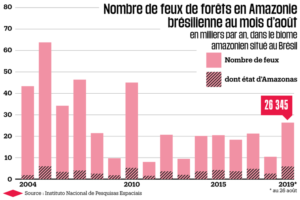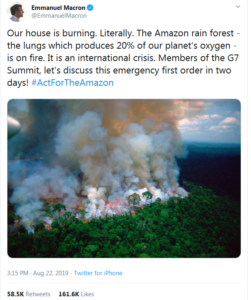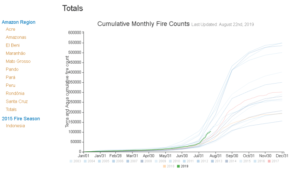by A. Watts, Oct 1, 2025 in WUWT
For decades, we’ve been warned that the Amazon rainforest—the so-called “lungs of the planet”—was on the verge of collapse. Headlines screamed about tipping points, mass die-offs of giant trees, and irreversible climate catastrophe. Yet, buried in the data, something rather inconvenient has been happening: the Amazon is getting bigger, fatter, and taller.
A new Nature Plants study, covering 30 years of field data from 188 permanent forest plots across Amazonia, shows that the average size of Amazon trees has increased by more than 3% per decade . In plain English: the forest isn’t shrinking in stature, it’s bulking up.
The researchers found:
- Mean tree size up 3.3% per decade
- Largest trees (>40 cm diameter) increased 6.6% per decade
- Biomass increasingly concentrated in the biggest trees
- No evidence of large-scale die-off from climate stress
In their words:
“We find that tree size has been increasing across all size classes… The observed patterns match the expectations from increased resource availability, particularly from rising atmospheric CO₂.”
So much for the “large trees are doomed” hypothesis.
…
…
My Final Thoughts
The real takeaway is this:
- Rising CO₂ is not just a “pollutant”—it is also a powerful plant fertilizer.
- Amazonian forests are currently benefitting, not suffering, from this change.
- Predictions of imminent collapse have once again run headlong into inconvenient data.
When climate modelers assure us that “the science is settled,” it’s worth recalling just how often field data overturns the narrative. The Amazon was supposed to be collapsing. Instead, its trees are thriving.
That doesn’t sell headlines or funding proposals, but it’s what the evidence shows.
So, next time someone calls CO₂ “pollution,” remind them: without it, plants—and by extension, we—wouldn’t exist. And with a bit more of it, the world’s largest rainforest seems to be doing just fine.





